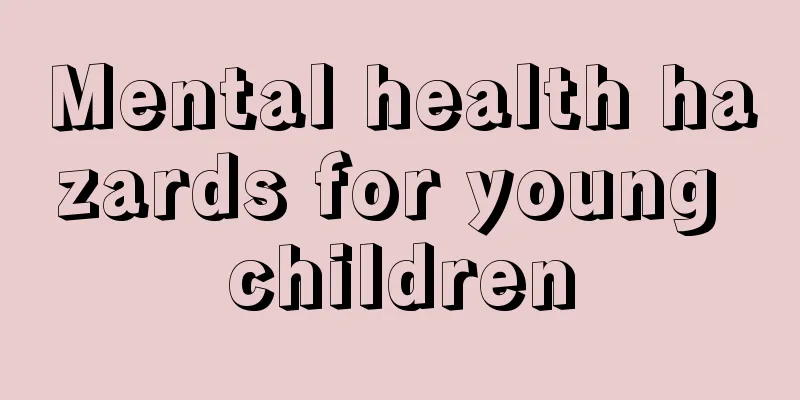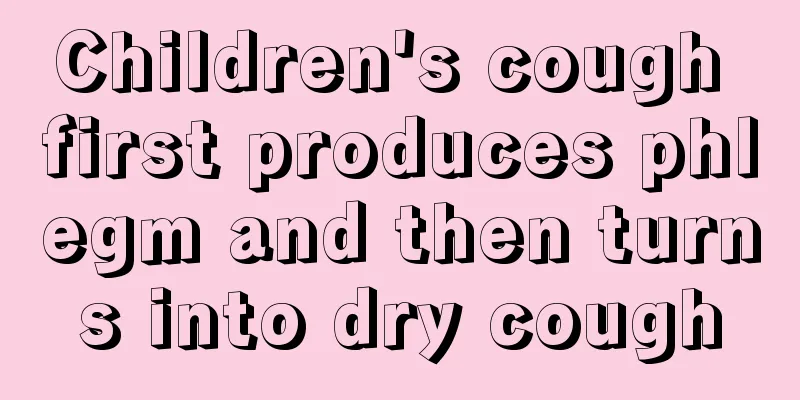Are active children smart?

|
Different people will show different personality traits due to different growth experiences and family factors. Some children are quiet and sensitive, while others are generous and active. In fact, children being too active is a very troubling problem for parents, as it often leads to children getting hurt and forming a habit of not doing things seriously. But some people also say that active children are smarter. Is this true? Are children with ADHD smart? Children with ADHD are indeed very smart, but ADHD is a disease of the nervous system, so it is better to seek medical treatment early. Over time, it will make it difficult for the child to concentrate, which will affect his study and life. Symptoms of ADHD Although ADHD is a developmental behavioral disorder in children, if the disease is not effectively controlled in childhood, it will continue into adulthood. The manifestations of ADHD vary from patient to patient at different ages. Next, we will introduce in detail the manifestation characteristics of ADHD in different periods. Preschool period: The school age period is the early stage of ADHD, and the symptoms gradually become obvious. Children in kindergarten show hyperactivity, have difficulty sitting still, following rules, and concentrating. They do not listen in class, have difficulty learning, walk around casually, disobey discipline, cannot get along well with other children, refuse to go to bed, and are often punished by teachers. Elementary school period: During this period, ADHD begins to develop and mature, and all symptoms become apparent, such as short attention span, inattention in class, easy distraction, difficulty learning, inability to complete homework, poor tolerance for frustration, overreaction to stimuli, agitation and willfulness, emotional instability, aggressive behavior, difficulty getting along with peers, and being the class "clown." Middle school period: As they grow older, patients develop a sense of self-control, and their excessive activity may gradually decrease. They still have difficulty concentrating, are slow to accept education, lack self-esteem and motivation, are unreliable, have aggressive and excitable behavior, overreact to comfort, have negligent behavior, are emotionally unstable, lie, skip school, and are prone to accidents or juvenile delinquency. Adulthood: The peak incidence of ADHD is between 6 and 15 years old. Only if it is not effectively treated in the early stages will the condition continue into adulthood. Even though the hyperactivity has been significantly reduced, more than half of the people are still different from normal people. Most people's attention is easily distracted, they become agitated, have emotional outbursts, are prone to arguing with others and trembling, have tense relationships with colleagues, have difficulty participating in group activities, are addicted to alcohol and gambling, are not competent at work, lack ideals and perseverance, and have difficulty making progress in their careers. Causes of ADHD in children Genetic factors (20%): Current studies have shown that this disorder is related to genetic factors, with a heritability of 0.75-0.91. The mode of inheritance is still unclear and may be multi-gene inheritance. Molecular genetic studies have shown that the disorder is associated with polymorphisms in the dopamine receptor gene. Neurophysiological factors (25%): Children with this disorder have a high rate of EEG abnormalities, primarily increased slow-wave activity. EEG power spectrum analysis revealed that the slow wave power increased, the alpha wave power decreased, and the average frequency decreased. This suggests that children with this disorder have delayed central nervous system maturation or insufficient awakening of the cerebral cortex. Mild brain injury (15%): Mild brain damage due to various reasons during pregnancy, perinatal period and after birth may be the cause of the disorder in some children, but no one type of brain damage exists in all children with the disorder, not all children with such damage suffer from the disorder, and many children do not have evidence of brain damage. Neuroanatomical factors (8%): Magnetic resonance imaging studies have reported that children with this disorder have a reduction in the volume of the corpus callosum and caudate nucleus, and functional magnetic resonance imaging studies have also reported that children with this disorder have reduced metabolism in the caudate nucleus, frontal region, and anterior cingulate gyrus. Psychosocial factors (10%): Unfavorable social and family environment, such as economic poverty, broken relationship between parents, and improper education methods, can increase the risk of children developing this disorder. Other factors (15%) : This disorder may be related to zinc and iron deficiency and elevated blood lead levels. Colas, coffee, and food additives may increase a child's risk of developing the disorder. |
<<: Why do children like to suck their fingers?
>>: What is the best thing for a child to eat after vomiting?
Recommend
What medicine should children take for intestinal spasms
Childhood intestinal spasms are a disease that is...
Is it OK for a baby to sleep on his tummy?
Like adults, babies’ sleeping positions are very ...
What to do if children have dry cough
Coughing is very common. Although coughing will n...
When does the baby's foot arch form?
In a family with a newborn baby, the baby natural...
What is the physiological milk aversion period?
I believe many parents have encountered this situ...
What happens if my baby has green stool? 9 most common reasons
When parents find that their baby has green stool...
The child's throat always makes a humming sound
The healthy growth of children is the common wish...
How to treat children's dampness
Dampness is an important cause of physical weakne...
Baby has diarrhea during the incubation period of pneumonia
Many babies will develop pneumonia after catching...
What to do if children have ringworm on their face
If a child has ringworm on his face, it will grea...
It is harmful for children to have hard lumps of earwax
In fact, the ears also have secretions. Although ...
Symptoms of poor mental health in newborns
Newborn babies are generally sleepy, because they...
Causes of cowardice and inferiority complex
In the process of taking care of their children, ...
How tall is a child usually at birth?
The issue of height has always been a concern for...
What to do if a child's tooth root is broken
Children are naughty by nature, so parents must t...









